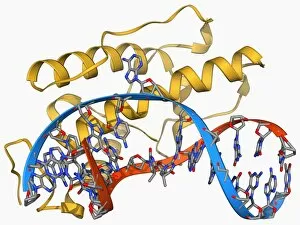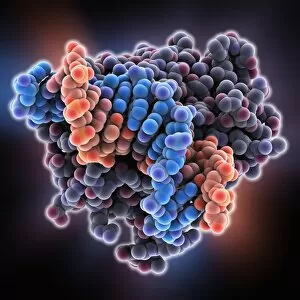Base Excision Repair Collection
"Unraveling the Secrets of Base Excision Repair: A Molecular Dance" In the intricate world of DNA repair
All Professionally Made to Order for Quick Shipping
"Unraveling the Secrets of Base Excision Repair: A Molecular Dance" In the intricate world of DNA repair, base excision repair (BER) emerges as a crucial mechanism to maintain genomic integrity. At its core, BER involves a series of coordinated steps orchestrated by various enzymes and protein complexes. The process begins with the recognition and removal of damaged bases by specialized glycosylases such as oxoguanine glycosylase complex F006/9318 and methyladenine glycosylase bound to DNA C014/0877. These vigilant guardians identify lesions like oxidized guanine or abnormal methylated adenines, ensuring their timely elimination. Once detected, these glycosylases create an opening in the DNA helix, allowing endonucleases like Endonuclease IV molecule F006/9480 to step in. With surgical precision, they cleave the phosphodiester backbone at specific sites near the damaged base, creating a gap that needs immediate attention. Enter another key player - DNA polymerase. This versatile enzyme acts as a molecular builder by adding new nucleotides complementary to the undamaged strand. Guided by its fidelity-enhancing subunits like F006/9559 or simply working solo, it fills in the missing information with utmost accuracy. But wait. The repaired segment is not yet complete without proper sealing. Ligases join forces here; they skillfully reconnect the newly synthesized fragment with adjacent DNA strands through phosphodiester bonds. As if this intricate choreography wasn't enough for BER's success story, additional actors make their appearance on stage. Bacteriophage restriction enzyme F006/9531 ensures foreign genetic material doesn't infiltrate while maintaining genome stability. Together, these molecular ballet dancers orchestrate base excision repair – an elegant symphony safeguarding our genetic blueprint against potentially harmful mutations. Understanding this dance unlocks insights into diseases linked to faulty BER mechanisms and paves the way for innovative therapeutic interventions.












